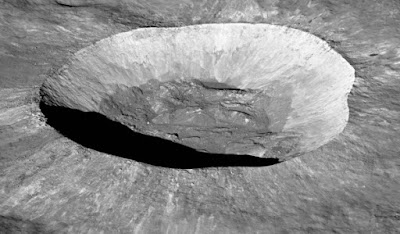Lunar Face Lifts?
The stereotype of aging movie stars and high society types is that they go to a cosmetic surgeon and get their faces lifted so they can look younger. Seems that our old pal the Man in the Moon has been doing that all by his lonesome (with the help of meteorite impacts) for quite some time.
The moon is hit by meteorites, and secondary craters are formed when the debris comes back down. (Not a good place for housing, since there are quite a few rocks zipping around up there. Earth gets to slow them down and burn off many in our atmosphere, giving us tons of dust every day.) New observations have changed a passel of ideas about the age of the moon and other things. Sorry, deep-time advocates, but the age of the moon has been reset way back — the universe was created recently.
 |
| Giordano Bruno crater image credits: NASA / Goddard / Arizona State University |
New study of craters shows that moon’s surface gets churned every 81,000 years, not every million years.To read the rest, rock on over to "Moon Just Got 100-fold Younger".
“I like it when theories are proven wrong, or exciting new things come up,” remarked Kathleen Mandt of Southwest Research Institute, quoted by New Scientist. That’s how to put a cheerful spin on an orders-of-magnitude correction. “The Lunar Reconnaissance Orbiter is starting to show there’s a lot we don’t know about the moon.” Data from LRO are showing a much higher influx of meteorites to the moon’s surface, implying that future astronauts stand a bigger-than-trivial chance of being in danger from flying rocks and dust. The data raise questions about the age of the lunar surface.